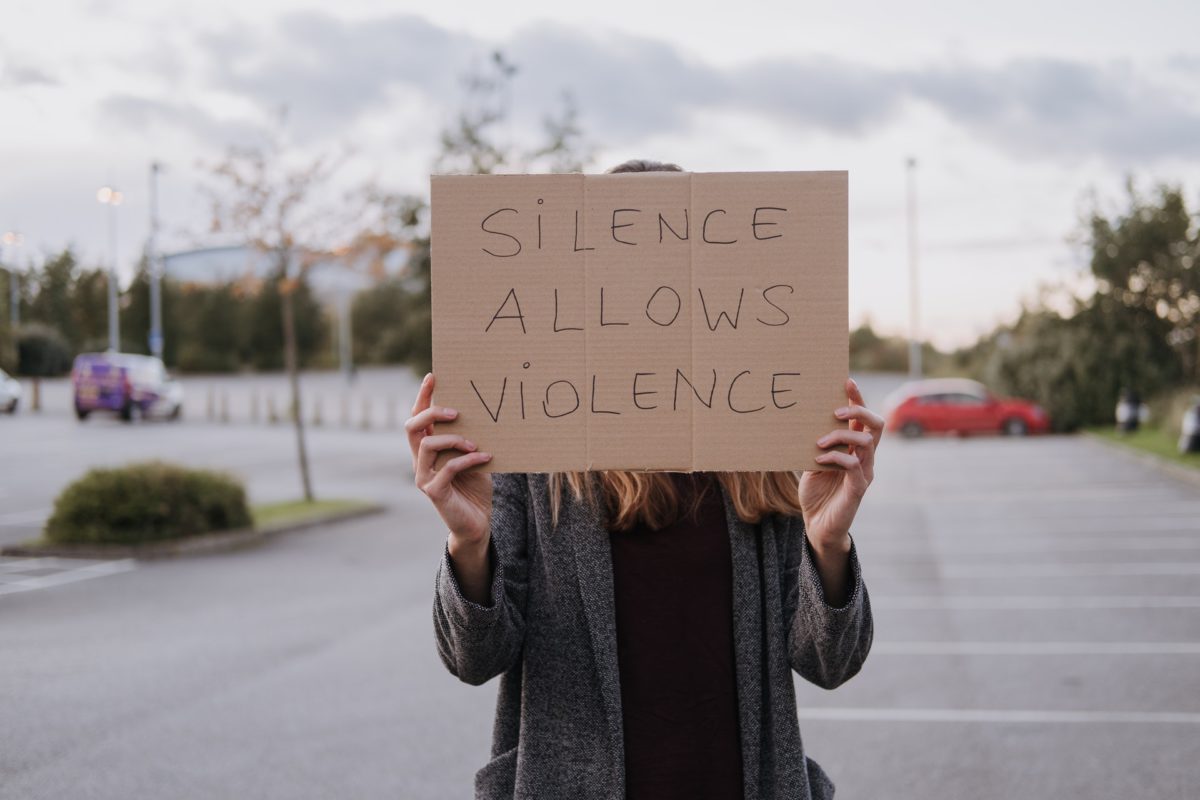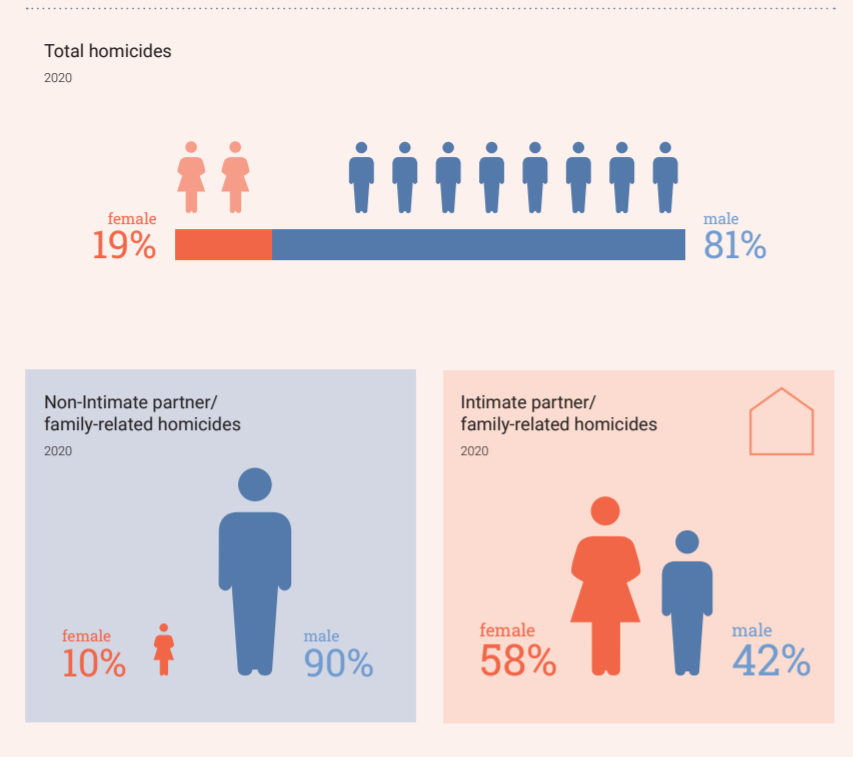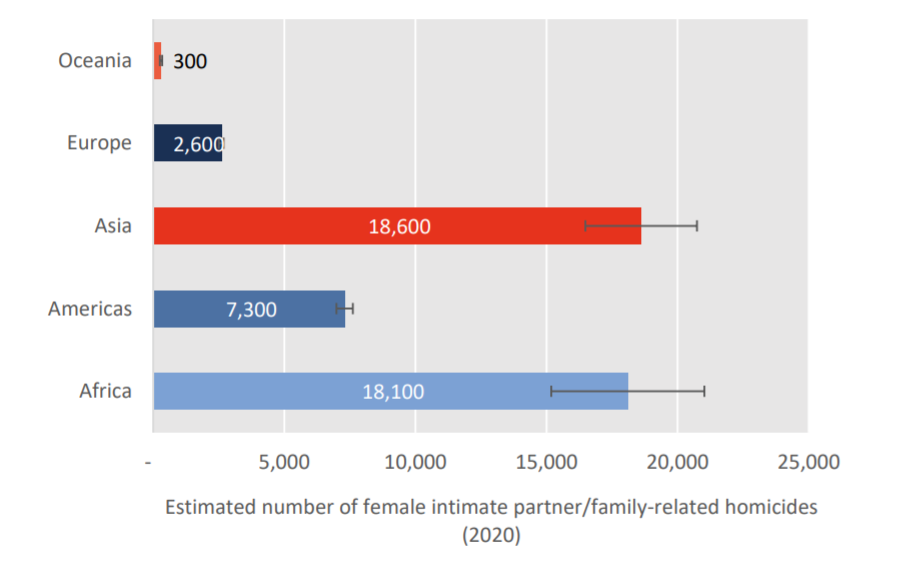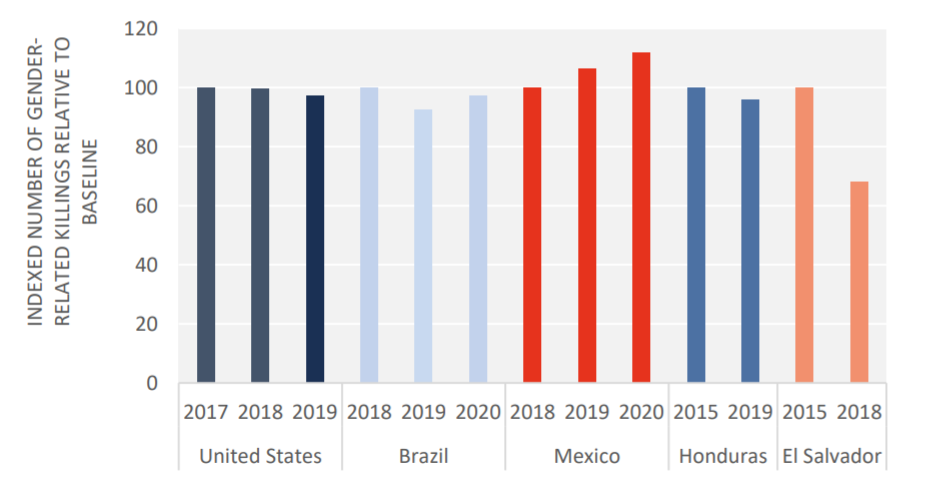
Gender-Based Killings Continue To Disproportionately Affect Women & Girls Globally: UNODC
By a Biometrica staffer
On average, a woman or girl is killed by someone in her own family every 11 minutes across the world, according to a report published by the United Nations Office on Drugs and Crime (UNODC) this month. In total, around 47,000 women and girls were killed by their intimate partners or other family members in 2020, the report adds. Over the past decade, the magnitude of gender-related killings has been largely unchanged with but marginal decreases.
Women and girls in all regions across the world are affected by this type of gender-based violence. With an estimated 18,600 victims, Asia is the region with the highest number of victims in absolute terms, while Africa is the region with the highest level relative to the size of its female population. And although national trends can be volatile and vary drastically from one country to another, the Americas has seen a 9% increase in gender-related killings of women and girls over a decade.
In this piece, we explore more key findings of the UNODC report.
Why Does It Matter?

“The killing of women and girls at the hands of intimate partners or other family members – people whom they would normally be expected to trust – represents one of the most extreme manifestations of gender-based violence. Such killings are often the culmination of prior experiences of gender-based violence, which can include psychological, sexual and physical abuse,” the UNODC report’s introduction says.
To put it into perspective, an overwhelming majority of all homicide victims worldwide in 2020 were identified as men or boys (80%). Yet, when one segregates that further to just look at data on killings perpetrated by intimate partners or other family members, 58% of victims were women or girls. Despite accounting for only a tenth of all homicide victims, they bore a vastly disproportionate burden of lethal violence perpetrated “at home.”
October was National Domestic Violence Awareness Month in the U.S. and in his Domestic Violence Awareness Month proclamation, President Joe Biden called on all Americans to reaffirm their commitment to ending this violence. “For too long, domestic violence was considered a “family issue” and was left for families to address in private. That is why, decades ago, I created and pushed for the Violence Against Women Act (VAWA) to be passed,” Biden’s proclamation said back then adding that domestic violence affects millions of people in the country.
The data about violence committed against women in general — and Indigenous ones in particular — are staggering. For example, of all women who were stalked by an intimate partner, 81% were physically assaulted and 31% were sexually assaulted. Experts say that violence against women does not always start and end with murder. It often escalates, moving from slightly less threatening crimes like stalking, to physical or sexual assault, only to often culminate in homicide. In addition, it is widely acknowledged that the incidence of violence experienced by Native American women is much higher than that of other races. Biometrica’s Aara Ramesh wrote about this, pegged to the Violence Against Women Act (VAWA), in an earlier piece.
The Justice Department also kicked off October by announcing more than $476 million in Office on Violence Against Women (OVW) grants. That aside, the department also said it was combatting domestic and sexual violence in local and tribal communities on other fronts. In his fiscal year 2022 budget, Biden proposed a historic $1 billion for grant programs administered by the Office on Violence Against Women (OVW). There’s no doubt that gender-based violence against women and girls remains a public safety challenge.
While global data on the impact of Covid-19 lockdown measures on gender-related killings of women or girls is patchy and inconclusive, the pandemic is generally thought to have worsened the plight of the vulnerable sections of society across the world. Gender-related violence is unlikely to be largely different from trends observed in other kinds of crimes, such as human trafficking, hate crimes, and organized crime in general.
So far, according to the UNODC report, the average annual number of these killings showed an increase of 11% from 2019 to 2020 in Western Europe and of 5% in Southern Europe. No change was detectable in Northern Europe and there was a slight decrease in Eastern Europe. By comparison, in Northern America the number of gender-related killings of women and girls increased by 8%, in Central America by 3% and in South America by 5%. But, these increases were of a similar magnitude to previous annual changes recorded in the past decade.
In October, U.S. Deputy Attorney General Lisa O. Monaco said: “Domestic Violence Awareness Month is a sobering reminder of the harm domestic violence inflicts across our country, at a time when the COVID-19 pandemic means that for many survivors, abuse may be compounded by being isolated with an abuser, loss of income and stress over the virus itself.”
Even though the data is inconclusive on whether gender-related violence perpetrated against women or girls by intimate partners or family members increased, it does, however, show with a little more clarity that this type of crime was relatively unaffected by Covid-19 measures per UNODC.
Region-Wise Trends

As mentioned at the start of this piece, Asia accounted for the largest number of female intimate partner/family-related killings in 2020 in absolute terms (with an estimated 18,600 victims). Africa stood second on the list with around 18,100 estimated victims, followed by the Americas with 7,300, Europe with 2,600 and, finally, Oceania with the lowest number (at 300).
The UNODC report cautions, though, that these absolute numbers are also influenced by the differences in the size of the populations of the world regions. For example, with an estimated population of 4.6 billion in 2020, Asia is by far the most populous region, so it is not surprising that the continent accounts for the largest share of female intimate partner/family-related homicides globally.
In Africa, Asia and Oceania, it is not possible to identify trends in female intimate partner/family-related homicide over the past decade, because of the limited availability of sufficiently disaggregated homicide data covering the period 2010–2020, the UNODC report says.
While the link between trends in female homicide and those perpetrated by intimate partner or other family members is not always direct, the significant reduction in female homicides in certain populous countries, such as India, Japan, the Philippines and Turkey, since 2010 may indicate that the situation is slowly improving in Asia, it adds. For example, in India, violent deaths related to dowry payments, accusations of witchcraft and other gender-related factors have been slowly declining, per the report.
The modest reduction in the total number of female victims of intimate partner/family-related homicide in Europe is the result of national trends that fluctuate around a small overall decline in several countries in Eastern Europe, including Belarus and Romania, and a few countries in Western Europe, the UNODC says.
When it comes to the Americas, the overall graph has been influenced by divergent trends at the country level. For example, among the most populous countries in the region, the U.S. and Brazil have recorded a slight decrease in recent years (although the latest data for the U.S. is for pre-pandemic 2019) while there has been an upward trend in Mexico. In contrast, less populous countries with higher rates of female intimate partner/family-related homicide like El Salvador and Honduras have recorded some reductions since 2015.
The average trends in Europe and the Americas mask differences and commonalities between sub-regions, UNODC says.

“In the long term, it is necessary to put in place interventions at multiple levels that can reduce the prevalence of gender-based violence and reduce the number of gender-related killings of women and girls,” the report concludes. As Biden said in his October proclamation: “Domestic violence is an abuse of power that tears apart the fabric of relationships and families and undermines the well-being of communities,” and it must be addressed holistically.